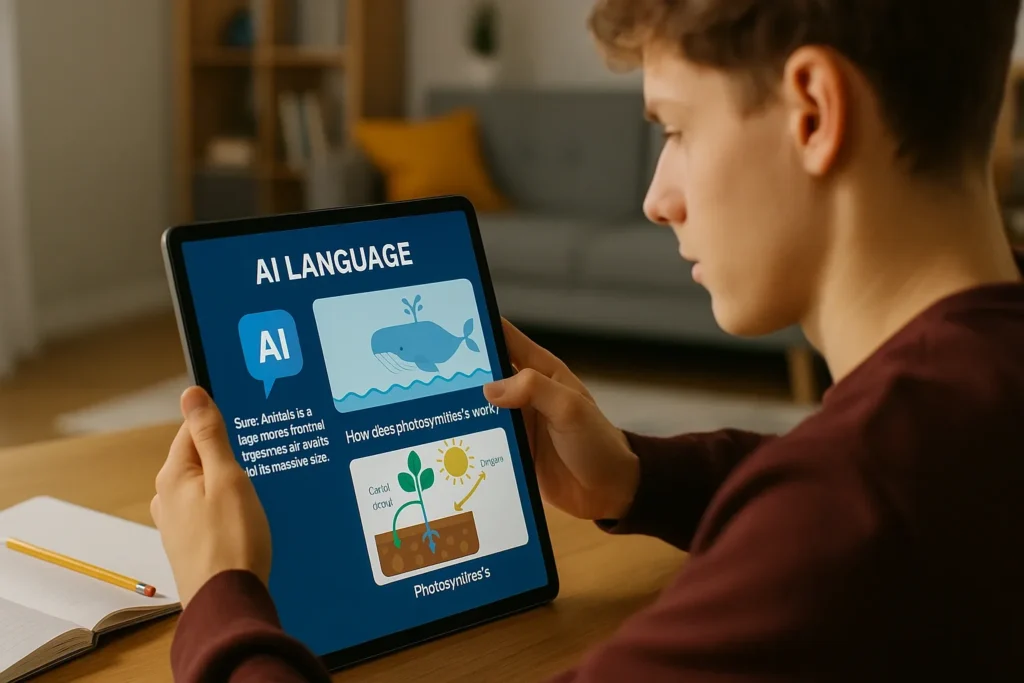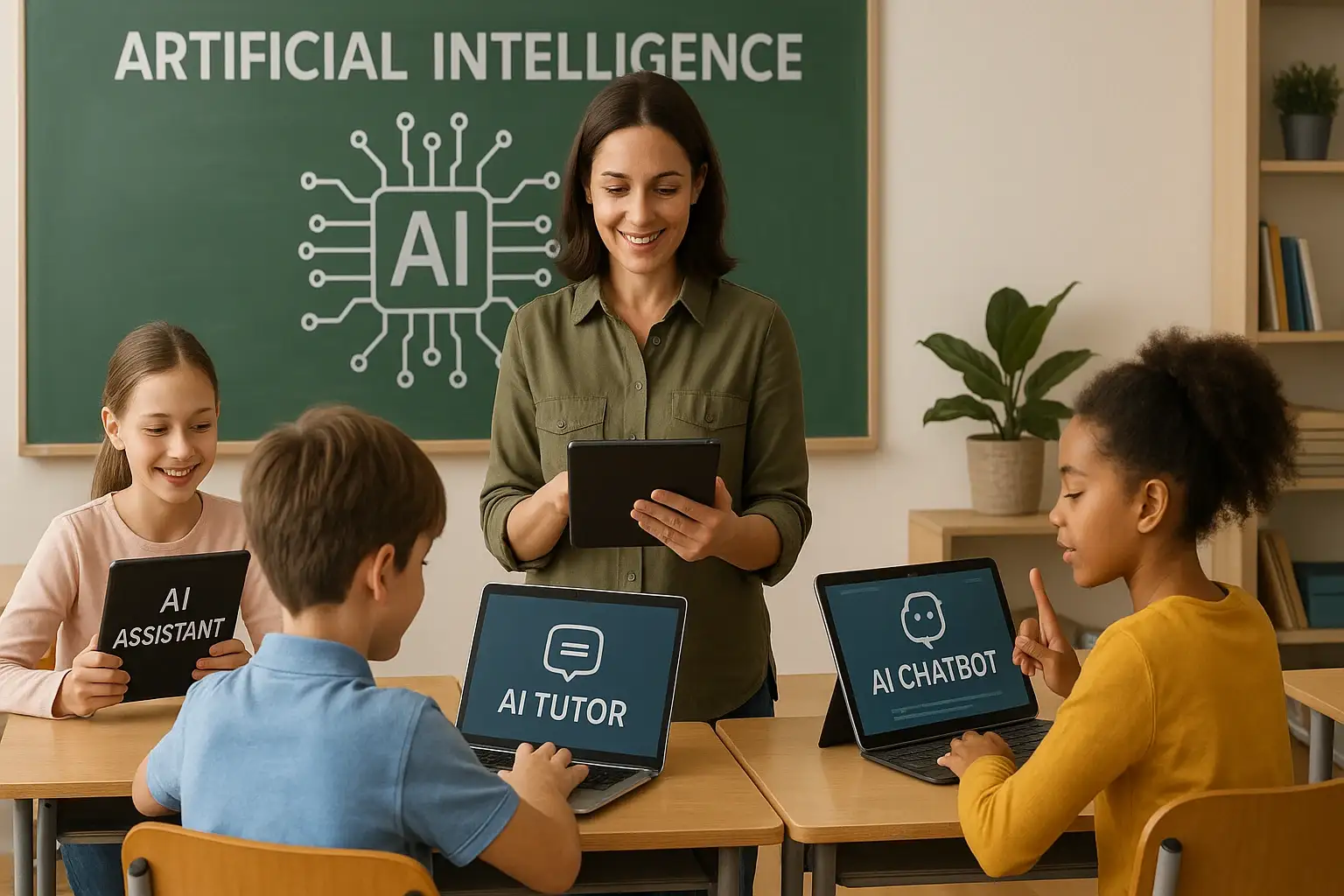Imagine if you had a helping hand in your classroom that never gets tired and is always ready to assist. That’s what Artificial Intelligence (AI) is becoming for teachers and students around the world. In this article, we’ll explore real-life applications of AI in education, showing how these smart tools are already transforming the way we teach and learn — in simple, practical, and human ways.
AI might sound like something out of a movie, but today it’s as real as chalk and blackboards once were. From simplifying tasks to offering one-on-one support, AI is becoming an everyday tool that helps make learning smoother and more personal.
And the best part? You don’t need to be a tech expert to use it. Many tools are as easy to use as a smartphone app or a voice assistant. That means any teacher, even those with little tech experience, can start benefiting from AI today.
What Are Real-Life Applications of AI in Education?
When we talk about real-life applications of AI in education, we mean how AI is actually being used right now in schools, classrooms, and online learning. It’s not science fiction — it’s happening every day.
These applications come in many forms — from apps that help kids practice math to smart systems that guide teachers in understanding student performance. It’s all about using technology not to complicate things, but to make teaching and learning easier, faster, and more enjoyable.
Whether you’re teaching in a big city school or a small rural classroom, AI tools can be adjusted to fit different needs and realities. They’re flexible and customizable, which helps create more inclusive and effective educational experiences.
👉 Understand the future of AI in education: benefits, tools, challenges, and how teachers can prepare. Humanized and easy-to-read guide.
Personalized Learning: Teaching Each Student Differently
Every student learns differently. Some are fast, others need more time. Some like reading, others prefer videos. AI tools can adjust lessons for each student’s pace and style.
When AI tracks a student’s progress and recommends the right material, it helps remove the pressure of “one-size-fits-all” learning. This means fewer frustrated learners and more happy, motivated students who feel understood.
Imagine a classroom where one student is reviewing multiplication while another explores geometry — all at the same time, guided by AI. This is already possible with platforms that adapt in real time to what each learner needs most.
Grading and Feedback: Saving Teachers’ Time
One of the biggest headaches for teachers is grading. AI tools can correct multiple-choice tests, grammar, and even short texts.
By handling repetitive grading tasks, AI allows teachers to focus on planning creative lessons and giving students more personal support. It’s like having a reliable assistant who works quickly and never complains.
Plus, the feedback AI provides can be instant. Students don’t have to wait days to know what they did right or wrong — they get the answers right away, which helps them learn faster and with more confidence.
Helping Students with Disabilities
AI is also a great support for students who have learning challenges. Tools can read texts aloud, convert voice into text, or help organize ideas visually.
This means that students who once struggled to keep up can now learn at their own pace and style, gaining confidence along the way. It levels the playing field, making education more accessible and inclusive for all.
For example, students with dyslexia can use AI to hear the content spoken aloud, while those with motor difficulties can use voice commands to interact with the material — making learning more autonomous and respectful of individual needs.

Virtual Tutors and Assistants
Students often need help after school hours. That’s where AI-powered virtual assistants come in.
These tools can answer questions at any time, which is especially useful for students who study late or live in places with limited internet access to teachers. They’re like a tutor in your pocket, always ready to help.
Apps like Duolingo or Khan Academy’s AI features are examples of how students can get instant explanations or practice without having to wait until the next school day. This continuous access boosts independent learning.
Preventing Dropouts and Identifying Needs Early
With so much data, AI can detect patterns in student behavior:
- Missing classes.
- Bad grades.
- Lack of participation.
When schools can act early, they can prevent students from falling too far behind. AI helps teachers notice warning signs early enough to offer support that could change a student’s future.
These tools don’t just spot problems—they suggest solutions too. AI can recommend personalized learning plans or alert counselors, helping to build stronger support systems before a crisis happens.
Language Learning Made Easier
Learning a new language can be tough, but AI makes it smoother:
- Correcting pronunciation in real time.
- Repeating phrases for practice.
- Translating words instantly.
What used to require a private tutor can now happen on a phone at any time of the day. AI gives learners instant feedback and helps build confidence in speaking, reading, and writing.
These features are especially helpful for immigrant students or those in bilingual education, offering extra language support that’s available whenever they need it — not just during class time.
Keeping Classrooms Organized
AI can also help with scheduling, reminders, and organizing class content. For example:
- Google Classroom suggests deadlines.
- ChatGPT helps create lesson plans or ideas for classroom activities.
With everything happening in schools today, teachers need all the help they can get to stay organized. AI tools reduce stress and let educators focus on what they do best: teaching.
Even simple AI-based calendar tools can automatically schedule meetings, track attendance, or remind students of upcoming tasks — making classroom management less overwhelming for teachers.
Key Points About Real-Life Applications of AI in Education
- AI adapts to each student’s learning style.
- It saves time by correcting and giving feedback.
- Helps students with disabilities or learning difficulties.
- Offers 24/7 support with virtual tutors.
- Detects signs of school dropout early.
- Makes language learning easier and more fun.
- Helps teachers stay organized and productive.
Conclusion
AI is already part of many classrooms around the world. From personalized learning to virtual tutors, it brings practical help to both teachers and students. Most importantly, it doesn’t replace people — it works with them.
More than just a trend, AI is proving to be a reliable partner in the learning process. It empowers teachers and helps students unlock their full potential in ways that were once impossible.
Now it’s your turn! Have you used any of these tools in your classroom? Share your experience in the comments and let’s learn from each other!

